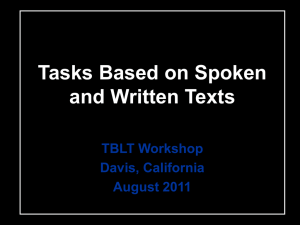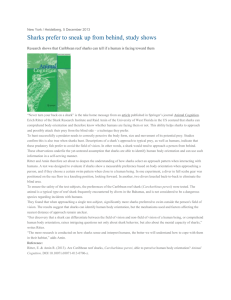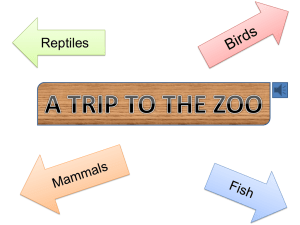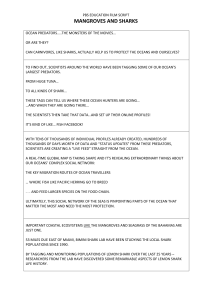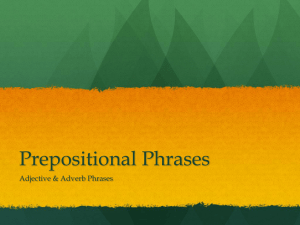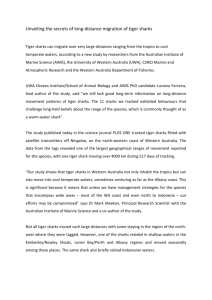OaKPark-LP
advertisement
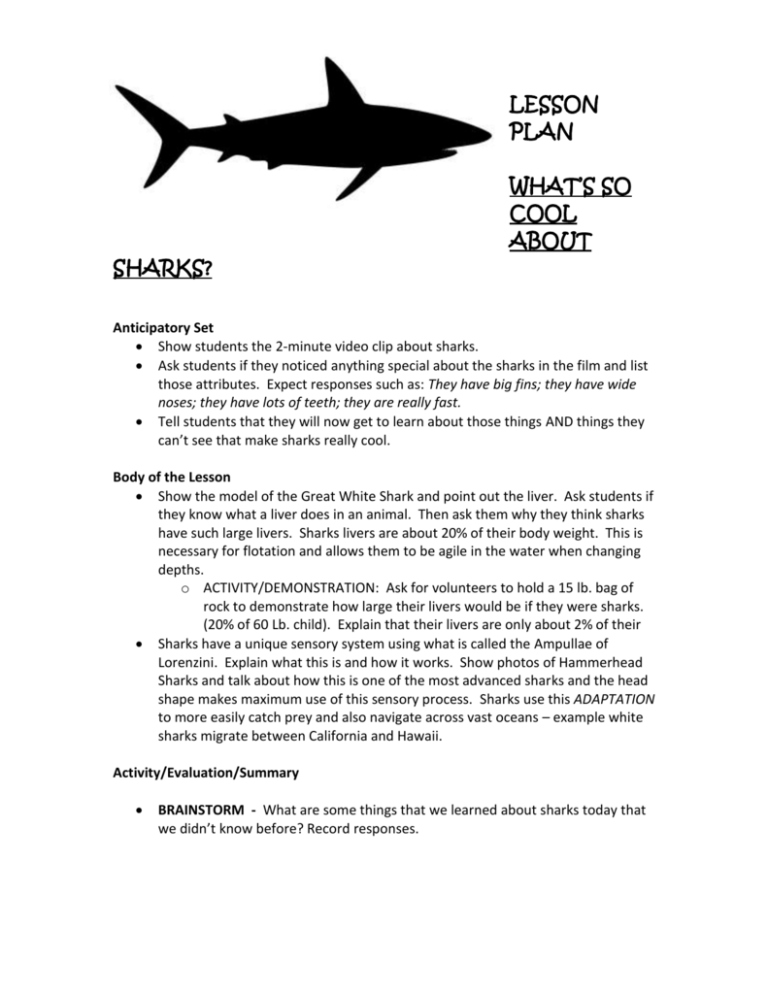
LESSON PLAN WHAT’S SO COOL ABOUT SHARKS? Anticipatory Set Show students the 2-minute video clip about sharks. Ask students if they noticed anything special about the sharks in the film and list those attributes. Expect responses such as: They have big fins; they have wide noses; they have lots of teeth; they are really fast. Tell students that they will now get to learn about those things AND things they can’t see that make sharks really cool. Body of the Lesson Show the model of the Great White Shark and point out the liver. Ask students if they know what a liver does in an animal. Then ask them why they think sharks have such large livers. Sharks livers are about 20% of their body weight. This is necessary for flotation and allows them to be agile in the water when changing depths. o ACTIVITY/DEMONSTRATION: Ask for volunteers to hold a 15 lb. bag of rock to demonstrate how large their livers would be if they were sharks. (20% of 60 Lb. child). Explain that their livers are only about 2% of their Sharks have a unique sensory system using what is called the Ampullae of Lorenzini. Explain what this is and how it works. Show photos of Hammerhead Sharks and talk about how this is one of the most advanced sharks and the head shape makes maximum use of this sensory process. Sharks use this ADAPTATION to more easily catch prey and also navigate across vast oceans – example white sharks migrate between California and Hawaii. Activity/Evaluation/Summary BRAINSTORM - What are some things that we learned about sharks today that we didn’t know before? Record responses. Lesson Narrative After shark week, we held lessons at Oak Hills and Red Oak Elementary Schools during their lunch times. An announcement was made at each school that invited interested students to spend their lunch with the sharks – well- the Shark Team. Our team created a Power Point to add a visual aid to the lesson. We inserted a lot of pictures so the students would have something to look at. We began our lesson by asking the kids what they already knew about sharks. After we got a few answers, we showed them a two-minute movie that included footage of sharks filmed by Dr. Anderson and pictures we had been taking throughout our journey. Then we went through our power point and talked to them about sharks. The focus of this lesson was what made sharks so important to the ecosystem, why we couldn’t live without them, and how evolution caused them to be the ocean’s top predators. Part of our presentation explained why the liver was so crucial to the sharks. Sharks’ livers are about 25% of their total body weight. They use their livers to clean their bodies’ of toxins and also for buoyancy. To represent how big a shark’s liver is, we took a 15 pound bag of soil and had a child about 60 pounds hold it. He or she was shocked by how heavy it was. We let the kids take turns holding the bag. We also included a shark model that was transparent so the students could see the inside of a shark. We pointed out the liver so they could see what it looked like. To add a little bit more excitement, we showed them a Great White Shark tooth. Then, as they were talking about how big it was, we showed them a megalodon’s tooth (an ancient shark that lived roughly 25 to 1.6 million years ago). Their teeth were up to 7 inches. The students couldn’t believe their eyes when they saw the megalodon’s tooth. Once we finished the organized portion of the lesson, we had some time for questions and answers. When we asked if they had any questions, hands shoot up into the air. They had many questions including what is the biggest shark and if we had ever swam with sharks. We answered all the questions to the best of our ability, but the bell rang before we got to all of them. However, many of them chose to stay a bit longer to ask their questions. LINK TO CALIFORNIA CONTENT STANDARDS IN SCIENCE FOR GRADES 1-5 GRADE ONE 1. Materials come in different forms (states), including solids, liquids, and gases. As a basis for understanding this concept: a. Students know solids, liquids, and gases have different properties. b. Students know the properties of substances can change when the substances are mixed, cooled, or heated. GRADE TWO 2. Plants and animals meet their needs in different ways. As a basis for understanding this concept: a. Students know different plants and animals inhabit different kinds of environments and have external features that help them thrive in different kinds of places. GRADE THREE 3. Adaptations in physical structure or behavior may improve an organism’s chance for survival. As a basis for understanding this concept: a. Students know plants and animals have structures that serve different functions in growth, survival, and reproduction. b. Students know examples of diverse life forms in different environments, such as oceans, deserts, tundra, forests, grasslands, and wetlands. c. Students know living things cause changes in the environment in which they live: some of these changes are detrimental to the organism or other organisms, and some are beneficial. d. Students know when the environment changes, some plants and animals survive and reproduce; others die or move to new locations. e. Students know that some kinds of organisms that once lived on Earth have completely disappeared and that some of those resembled others that are alive today. GRADE FOUR 2. All organisms need energy and matter to live and grow. As a basis for understanding this concept: a. Students know plants are the primary source of matter and energy entering most food chains. b. Students know producers and consumers (herbivores, carnivores, omnivores, and decomposers) are related in food chains and food webs and may compete with each other for resources in an ecosystem. c. Students know decomposers, including many fungi, insects, and microorganisms, recycle matter from dead plants and animals. 3. Living organisms depend on one another and on their environment for survival. As a basis for understanding this concept: a. Students know ecosystems can be characterized by their living and nonliving components. b. Students know that in any particular environment, some kinds of plants and animals survive well, some survive less well, and some cannot survive at all. GRADE FIVE 1. Plants and animals have structures for respiration, digestion, waste disposal, and transport of materials.


